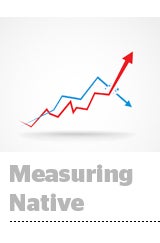 While native advertising is this year’s digital buzzword, it’s not clear how one can measure its effectiveness. AdExchanger ran this question past a number of agencies:
While native advertising is this year’s digital buzzword, it’s not clear how one can measure its effectiveness. AdExchanger ran this question past a number of agencies:
“How do you measure native advertising?”
Click below or scroll down to read their responses
- Cary Tilds, chief innovation officer, GroupM
- Lisa Penelton, VP of marketing science, Critical Mass
- Andrea Stalf, global head of performance marketing, SapientNitro
- Asli Hamamci, managing director, global digital strategy, Mindshare NA
- Jeremy Lockhorn, VP of emerging media, Razorfish
Cary Tilds, chief innovation officer, GroupM
“Native ads can come in the form of articles, video, short text with links and even formats that look like rich media. Some might find challenges in measuring native ads because these ads come in so many form factors, play on multiple devices differently and may have differing measures depending on the channel. The trick is to ensure the analytical approach is consistent, depending on the channel, device and job to be done for the brand. We can measure clicks/taps/swipes, view-throughs, shares, interactions in context or on landing environments and ultimately sales, whether offline or online. Where we can, we measure native advertising as we do all other media, with a third-party, MRC accredited metric.”
Lisa Penelton, VP of marketing science, Critical Mass
“If we define native advertising as self-published advertising, it’s very easily quantified, tested and optimized. An example of that would be promotional tiles on a company’s owned website. In that case, you can control and test the advertising effectiveness easily use tools like Adobe Target and Google Experiments to do direct content comparisons to select audiences. It’s done much more economically using one’s own inventory.”
Andrea Stalf, global head of performance marketing, SapientNitro
“Native advertising is most successful when tied to compelling and relevant content. Advertisers want to measure both the content and the ad unit performance, to optimize. For native display paired with sponsored content, return will come from traditional measures of display ROI (ultimately CPA) but also the power of the content to engage: time with content, shareability, traffic and reader diagnostics.”
Asli Hamamci, managing director, global digital strategy, Mindshare NA
“When measuring native advertising, there are two main metrics that we look at: scale and engagement. Scale is the volume of the targeted reach that measures the efficiency of our promotion. Engagement, evaluated through user actions such as time spent and social shares, informs us if the content is resonating with our target audience. What is really exciting to see is the evolving analytics such as attitudinal analysis, mouse tracking and eye tracking that is now available to us. As advanced native measurement becomes mainstream, it will change the way we assess campaigns.”
Jeremy Lockhorn, VP of emerging media, Razorfish
“[Measurement is] mostly in line with ways we measure other digital channels. Standard terminology has yet to widely emerge, but it kind of looks and feels like rich media advertising where you’ve got the initial ad unit (impressions), some additional content (expand, interaction, or read rate), usually some sort of time spent or engagement metric (if it’s video content, this may be average completion rate or the like), and then secondary interaction metrics (did they click through to the marketer’s website, share to their social networks, or take some other action after the first interaction?) Like other digital channels, we’re then taking those metrics and finding ways to link them to real business objectives, based on the individual client/marketer.”










